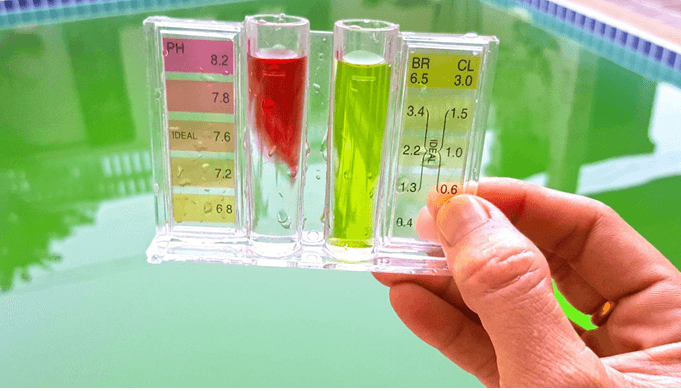Maintaining Proper Pool Water Chemistry: A Guide to Crystal-Clear Water

A sparkling, inviting pool is more than just a backyard luxury—it’s a commitment to proper maintenance. At the heart of a healthy pool lies balanced water chemistry. Incorrect chemical levels can lead to cloudy water, skin irritation, algae growth, or even damage to pool equipment. By understanding key chemical parameters and maintaining them consistently, you can ensure your pool remains safe and enjoyable. This guide covers the essentials of pool water chemistry, offering practical steps to keep your water pristine all season long.
Why Pool Chemistry Matters
Balanced water chemistry is critical for both swimmer safety and pool longevity. Improper levels of chlorine, pH, or alkalinity can create an environment where bacteria and algae thrive, posing health risks. Unbalanced water can also corrode pool surfaces, ladders, or pumps, leading to costly repairs. Regular testing and adjustment prevent these issues, ensuring your pool is a welcoming oasis. Whether you’re a new pool owner or a seasoned pro, mastering water chemistry is the foundation of a clean, safe swimming experience.
Key Chemical Parameters to Monitor
To maintain ideal pool water, focus on these core chemical factors:
- pH Level: pH measures water acidity, ideally ranging from 7.2 to 7.6. Too low, and water becomes corrosive; too high, and chlorine loses effectiveness. Test pH weekly using a reliable test kit or strips.
- Chlorine: Chlorine sanitizes the pool, killing bacteria and algae. Maintain free chlorine levels between 1–3 ppm (parts per million). Low levels invite germs, while high levels can irritate skin and eyes.
- Total Alkalinity: Alkalinity stabilizes pH, keeping it from fluctuating. Aim for 80–120 ppm. Low alkalinity causes pH swings, while high levels make pH hard to adjust.
- Calcium Hardness: This measures dissolved calcium, ideally between 200–400 ppm. Low hardness damages plaster surfaces; high hardness causes scaling.
- Cyanuric Acid: This stabilizes chlorine in outdoor pools, protecting it from UV breakdown. Keep levels between 30–50 ppm to ensure chlorine works effectively.
Testing these parameters weekly—or more often during heavy use—helps catch imbalances early. Digital testers or professional lab services offer precision, but basic test strips work for most homeowners.
Tools and Techniques for Chemical Balance
Maintaining proper chemistry starts with regular testing and adjustments. Invest in a quality test kit, ideally one that measures pH, chlorine, alkalinity, and calcium hardness. Test the water at the same time each week for consistency, and always take samples away from jets or skimmers for accurate readings. Once you have results, adjust chemicals as needed:
For low pH, add sodium carbonate (soda ash); for high pH, use muriatic acid or sodium bisulfate. Add chlorine via tablets, liquid, or granular forms, ensuring you don’t overdo it. Alkalinity can be raised with sodium bicarbonate (baking soda) or lowered with acid. Calcium hardness requires calcium chloride to increase or dilution with fresh water to decrease. Always follow product instructions and add chemicals slowly, allowing circulation before retesting.
A pool cleaner can simplify maintenance by removing debris that affects water chemistry. Leaves, dirt, or grass can spike chlorine demand or alter pH, so keeping the pool free of organic matter is key. The best pool cleaner, such as a robotic model, scrubs surfaces and filters fine particles, reducing the chemical load on your system. Run your cleaner regularly to prevent buildup and maintain water clarity.
Routine Maintenance for Consistent Chemistry
Consistency is the secret to stable pool chemistry. Establish a weekly routine that includes testing, adjusting chemicals, and cleaning. Run your pool’s filtration system for 8–12 hours daily to circulate water and distribute chemicals evenly. Skim the surface and empty skimmer baskets to reduce debris. Vacuum the pool floor weekly to remove settled particles, especially after heavy use or storms. Shock the pool—adding a high dose of chlorine—every 1–2 weeks to eliminate contaminants like sweat or sunscreen. Shocking is especially important after pool parties or heavy rain, which can disrupt chemical balance.
Weather and usage impact chemistry, so adjust your routine accordingly. Hot weather or frequent swimming increases chlorine demand, while rain can dilute chemicals or introduce debris. If you’re away, ask a trusted neighbor to check your pool or hire a professional service to avoid coming home to a green mess.
Troubleshooting Common Issues
Even with diligent care, problems can arise. Cloudy water often signals low chlorine or high pH—test and adjust accordingly. Green water indicates algae, requiring a shock treatment and thorough cleaning with a pool cleaner. If swimmers report irritated eyes or skin, check pH and chlorine levels, as imbalances are often the culprit. Scaling or stains on pool surfaces suggest high calcium hardness or metals in the water; use a sequestering agent or consult a professional. Regular use of the best pool cleaner prevents debris from exacerbating these issues, keeping your water chemistry easier to manage.
Long-Term Tips for Success
Maintaining pool water chemistry is an ongoing task, but a few habits make it easier. Store chemicals in a cool, dry place to preserve their effectiveness, and never mix them directly. Keep a log of test results to track trends and catch issues early. If chemistry feels overwhelming, consider a salt-chlorine generator for automated chlorine production or consult a pool professional for seasonal checkups. Investing in quality tools, like a reliable test kit and a pool cleaner, saves time and ensures consistent results.
By staying proactive, you can keep your pool’s water crystal-clear and safe. The best pool cleaner complements chemical maintenance by keeping debris at bay, letting you focus on enjoying your pool rather than fighting chemistry battles. With these steps, your pool will be a refreshing haven for family and friends all season long.






